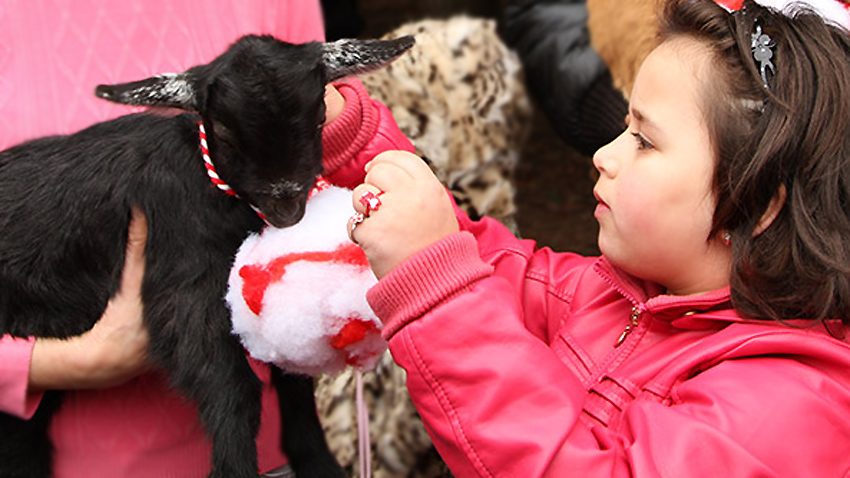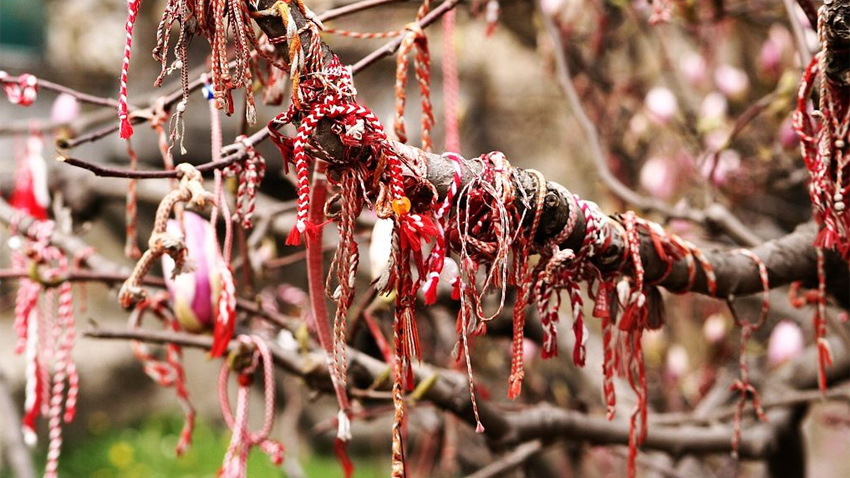March 1 is a feast day Bulgarians love very much. It marks the coming of spring, a day on which friends and relatives exchange martenitsas – traditional amulets made of intertwined white and red thread. On this day young and old adorn their somber winter clothes with flashes of colour – the martenitsas which usher in the hope of health and happiness. Martenitsas are also a token of reverence for Granny Marta – an ancient pagan figure that has lost none of its fascination to this day. She is traditionally seen as a symbol of femininity because of her mood changes but also because she has the power to breathe life back into nature and awaken it from a deep sleep.

Few people nowadays realize that besides a gift to be exchanged with their loved ones or a pretty addition to their attire, martenitsas are a symbol imbued with an ancient meaning and magical powers. March 1 is seen as the borderline between winter and spring and a symbolical transition from death to life, from barrenness to fertility and birth. That is why this is a time deemed dangerous but at the same time blessed, a time for incantations for health, prosperity, love and marriage. That is why there are two sides to the symbolism of the martenitsa – it wards off evil eyes and trouble but also brings health, power and fertility. Our ancestors used to make it out of wool or cotton in a classical combination of red and white. But there are other combinations as well: blue and white (usually for a boy) or blue and red (typical of some regions near Sofia and Melnik). Martenitsas can even be just one colour – plain white or plain red, whereas multicoloured martenitsas with threads of all colours are very popular in the Rhodopes. In some cases the two twisted ends of the martenitsa have a male and female figure, made of cotton or wool, hanging from them - Pizho and Penda.
In our day martenitsas are worn pinned onto an item of clothing, tied to the wrist or around the neck as a necklace. Once, they would be placed on different parts of the body: on the fingers or wrists, around the neck, on the toes, on the elbows underneath the shirt sleeves or around the waist underneath the waist-band or even inside the pants – this for men and bachelors. These are bodily parts that are not chosen randomly – the joints connect different parts of the body and are thought to be fragile or at risk so they need the power of the martenitsa to protect them.
By a tradition, martenitsas are usually made by elderly women but there are exceptions when it is unmarried lasses that make a martenitsa for their beloved as a special token of their love. It was not just people but farm animals that would be adorned with martenitsas – for health and so they would multiply throughout the year.

The white and the red colours of the martenitsa are usually seen as symbols of masculinity and femininity, of passive and active, of purity and the force of life. Significantly, these same colours have their symbolic place in wedding ceremonies. In many parts of the country, when newly weds enter their home for the first time a red thread or a martenitsa is laid out for them to step on. The intertwining of red with white is also an element of the clothes of the newly weds: the bride wears a white apron and a red sash, the groom – a red waist-band and a white kerchief in hand. In this sense the couple are like a martenitsa come to life, and vice versa - Pizho and Penda are seen as newly weds. The way martenitsas are connected with conceiving and giving birth is evident in some specific traditional rituals when the church is girdled with a martenitsa to ensure that the marriage shall be a happy one and that the bride shall beget a child; the baby’s diapers are tied together with a band made out of a white and red thread twisted together.
Ass. Prof. Vihra Baeva is a folklore expert at the Bulgarian Academy of Sciences Institute for Ethnology and Folklore Studies with Ethnographic Museum.
English version: Milena Daynova